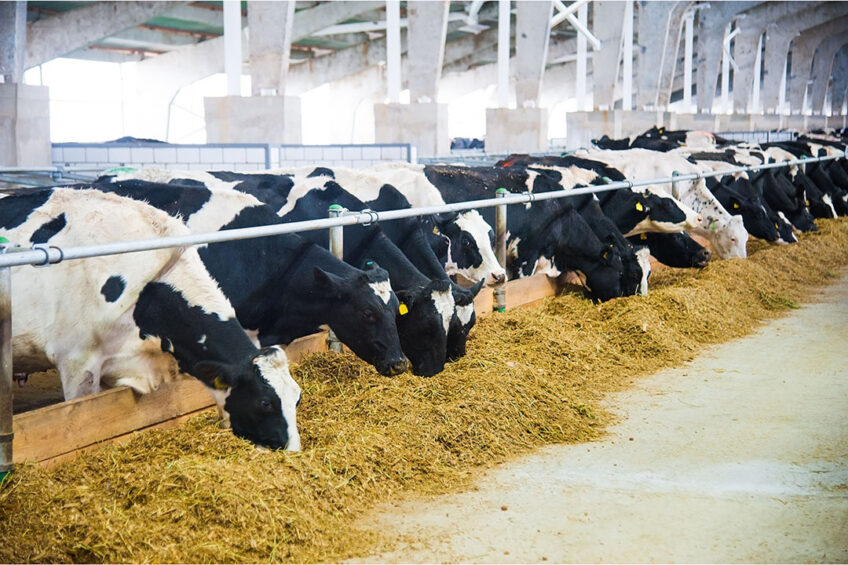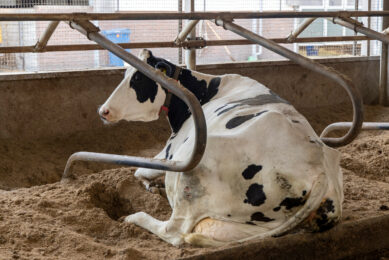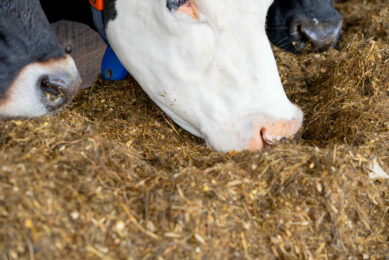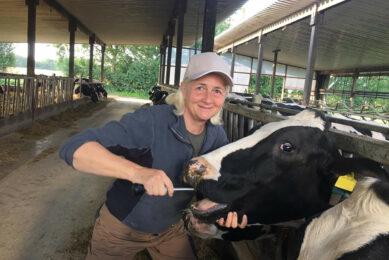A cost-effective approach to stamping out milk fever

Milk fever is still a common dairy cow health issue around the world, but the use of new preventative products, especially synthetic zeolite, is now turning the tide thanks to US research.
Zeolite is a specific family of ‘hydrated aluminosilicate’ minerals that can be produced in synthetic form and is commercially available to feed to pre-fresh dairy cows.
“We are still seeing milk fever on dairy farms in Wisconsin and beyond,” says Patrick Hoffman, Professor Emeritus at the University of Wisconsin-Madison. “However, at this point in time, we now have an alternative way of preventing milk fever and subclinical hypocalcemia by feeding synthetic zeolite 2-3 weeks before calving. As its use spreads, we should see a reduced incidence of hypocalcemia. Zeolite is a very interesting entry into the milk fever prevention market.”
Hoffman notes that in the US and Canada in particular, knowledge about this product is already at a high level. “Most dairy nutrition consultants are aware of feeding zeolite to pre-fresh cows and are working with it to some degree,” he says. “Adoption has happened relatively quickly. Feeding zeolite to prevent milk fever started with a group of researchers in Europe experimenting with natural and synthetic zeolite about 20 years ago. About a decade ago zeolite was introduced in Canada and then into the US.”
Knowledge building
Researchers have known for a long time that feeding excessive levels of phosphorus (P) pre-calving was causing an increase in milk fever (calcium, CA, deficiency) at calving. However, for many years the reasons for this observation was unclear. Scientists now also understand that a peptide hormone active in bone tissue (called fibroblast growth factor 23) can regulate bone resorption of Ca and P (and urinary retention of P).
“About 20 years ago in Europe, they observed that feeding synthetic zeolite before calving elevated levels of blood Ca at calving,” says Hoffman. “They thought zeolite was directly working to cause release of Ca from the bone (mobilisation) and improved intestinal absorption of Ca before calving, but that wasn’t exactly correct.”
That early research (and research since) has also shown that feeding zeolite before calving consistently reduces blood P levels, which induces bone mobilisation of Ca and P.
However, recently a University of Wisconsin-Madison team lead by Dr Laura Hernandez figured out how zeolite was affecting the binding of P and not Ca per se. In their study, feeding zeolite to pre-fresh cows decreased blood and salivary P levels and increased faecal excretion of P. The cows responded to the lower blood P levels by mobilising bone.
These insights into P metabolism, says Hoffman, have made it easier to figure out how to use zeolite and balance the diet of a pre-fresh cow.
Other ways of mitigating milk fever
The team at the University of Wisconsin-Madison continues to study zeolite, but Hoffman says Hernandez and her colleagues have also been studying a compound called 5-HTP, a form of the amino acid tryptophan.
“They’ve discovered that the mammary gland itself can send signals to the rest of the body that it is in need of calcium,” Hoffman explains. “A supplement form of 5-HTP is now being commercialised and it’s very exciting. The team speculates that it may work in concert with zeolite, but that needs to be studied. Whatever is simplest and most effective at the farm level will be implemented on farms.”
Researchers are also testing the supplementation of a plant called Solanum glaucophyllum, which contains the metabolically-active form of Vitamin D, D3. Giving small amounts of this plant in a bolus has been shown to increase blood Ca levels, but Hoffman says that form of application may be labour-intensive and so commercialisation of another format may be a better way forward. Still, other researchers are working on other products that increase Ca absorption from the intestine, such as difructose anhydride.
Zeolite use
Preventing milk fever around the world through giving synthetic zeolite will require education, says Hoffman. “We need to build an infrastructure of nutritionists, veterinarians and farmers who understand the mechanism is new and different.”
He explains that when zeolite is fed, blood P values are going to decrease at calving, which is what needs to happen, and after calving blood P levels will rise quickly to 4 to 6 mg per decilitre (within 24-48 hours).
“Almost all dairy cows experience a transient phase in which blood P decreases at calving then increases quickly after calving,” says Hoffman. “It’s nothing new, but feeding zeolite induces this earlier. So it’s a paradigm shift in thinking about how blood P levels influence milk fever.”
Zeolite should also be fed at the right amount and for the right length of time. Because zeolite binds P, feeding it for too long might cause a P depletion. “Zeolite is fast-acting and is needed only for about 2 weeks, at least a week before calving,” Hoffman explains, “but since we don’t know exactly when calving will occur, we can start 2-3 weeks before.” Zeolite must also be mixed properly into the diet.
Another benefit to feeding zeolite before calving is that the cost is reasonably comparable to other milk fever prevention programmes.
Hoffman explains that with feeding zeolite, farmers have to worry less about excess potassium going into the cow (and don’t have to monitor urine pH). This means farmers can feed their own higher-quality forages (alfalfa silage or grass silage) containing more protein and potassium. The need for purchasing low-potassium forages is avoided, protein supplementation costs may go down and that helps pays for the zeolite.
Hoffman adds that many dairy farmers who use zeolite also report that they don’t use as many calcium boluses, which also saves costs.
However, feeding synthetic zeolite is difficult to use in a 1-group dry cow situation, if cows are in the pre-fresh pen for long periods of time (greater than 28 days) and in overcrowded pre-fresh pens.
Worldwide use
Used correctly, zeolite represents a significant advancement in the prevention of milk fever.
Hoffman notes that Ca deficiencies at calving have many negative effects on cow performance, in addition to costing money and requiring more labour. While the second phase is easy to recognise due to clear symptoms, the consequences of early calcium deficiency are not easily detectable and can often be underestimated. In addition, cows that suffer from Ca deficiency have been shown to be more susceptible to other diseases.
Join 13,000+ subscribers
Subscribe to our newsletter to stay updated about all the need-to-know content in the dairy sector, two times a week.










